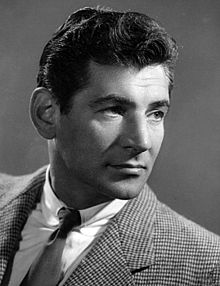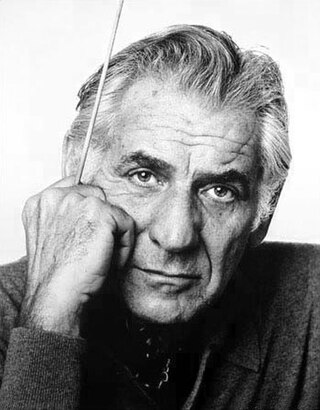
Leonard Bernstein was an American conductor, composer, pianist, music educator, author, and humanitarian. Considered to be one of the most important conductors of his time, he was the first American-born conductor to receive international acclaim. Bernstein was "one of the most prodigiously talented and successful musicians in American history" according to music critic Donal Henahan. Bernstein's honors and accolades include seven Emmy Awards, two Tony Awards, and 16 Grammy Awards as well as an Academy Award nomination. He received the Kennedy Center Honor in 1981.

The War Requiem, Op. 66, is a large-scale setting of the Requiem composed by Benjamin Britten mostly in 1961 and completed in January 1962. The War Requiem was performed for the consecration of the new Coventry Cathedral, which was built after the original fourteenth-century structure was destroyed in a World War II bombing raid. The traditional Latin texts are interspersed, in telling juxtaposition, with extra-liturgical poems by Wilfred Owen, written during World War I.
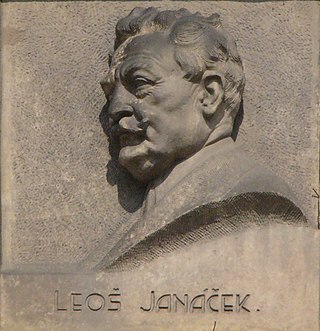
The Glagolitic Mass is a composition for soloists, double chorus, organ and orchestra by Leoš Janáček. The work was completed on 15 October 1926 and premiered by the Brno Arts Society, conducted by Jaroslav Kvapil, in Brno on 5 December 1927. Janáček revised the mass the next year.

Mass is a musical theatre work composed by Leonard Bernstein with text by Bernstein and additional text and lyrics by Stephen Schwartz. Commissioned by Jacqueline Kennedy, it premiered on September 8, 1971, conducted by Maurice Peress and choreographed by Alvin Ailey. The production used costume designs by Frank Thompson. The performance was part of the opening of the John F. Kennedy Center for the Performing Arts in Washington, D.C. Mass premiered in Europe in 1973, with John Mauceri conducting the Yale Symphony Orchestra in Vienna.

Chichester Psalms is an extended choral composition in three movements by Leonard Bernstein for boy treble or countertenor, choir and orchestra. The text was arranged by the composer from the Book of Psalms in the original Hebrew. Part 1 uses Psalms 100 and 108, Part 2 uses 2 and 23, and Part 3 uses 131 and 133. Bernstein scored the work for a reduced orchestra, but also made a version for an even smaller ensemble of organ, one harp, and percussion.
Serenade to Music is an orchestral concert work completed in 1938 by English composer Ralph Vaughan Williams, written as a tribute to conductor Sir Henry Wood. It features an orchestra and 16 vocal soloists, with lyrics adapted from the discussion about music and the music of the spheres from Act V, Scene I from the play The Merchant of Venice by William Shakespeare. Vaughan Williams later arranged the piece into versions for chorus and orchestra and solo violin and orchestra.
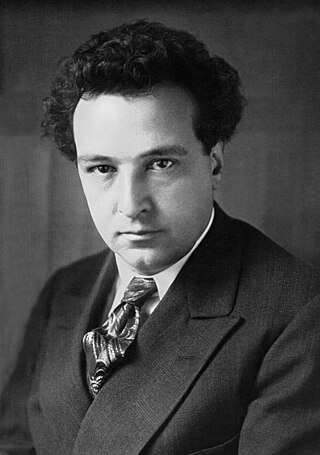
Jeanne d'Arc au bûcher is an oratorio by Arthur Honegger, originally commissioned by Ida Rubinstein. It was set to a libretto by Paul Claudel. The work lasts approximately 80 minutes.

The American Boychoir School was a boarding/day middle school located in Princeton, New Jersey, and the home of the American Boychoir. The school originated as the Columbus Boychoir in Columbus, Ohio. In 1950, the school relocated after receiving property in Princeton, New Jersey from the Lambert estate. The relocated school was renamed the American Boychoir School. It remained in this location until the sale of Albemarle in 2012. The school served boys in grades 4–8, many of whom came from across the United States and from many countries. It was one of only two boychoir boarding schools in the United States, the other being Saint Thomas Choir School in New York City. The school provided opportunity to boys from across the world to experience the rich world of music. The Boychoir toured across the contiguous United States, through Canada, as well as internationally, allowing students to gain diverse cultural perspective while performing at the professional level. The American Boychoir performed with numerous orchestras, frequently including the New York Philharmonic as well as the Philadelphia Symphony Orchestra.

James Litton was an American musician, who directed the American Boychoir from 1985 to 2001, and is widely recognized as one of the leading choral conductors of the day.
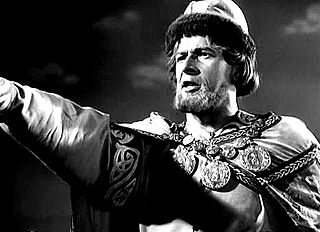
Alexander Nevsky is the score composed by Sergei Prokofiev for Sergei Eisenstein's 1938 film Alexander Nevsky. The subject of the film is the 13th century incursion of the knights of the Livonian Order into the territory of the Novgorod Republic, their capture of the city of Pskov, the summoning of Prince Alexander Nevsky to the defense of Rus', and his subsequent victory over the crusaders in 1242. The majority of the score's song texts were written by the poet Vladimir Lugovskoy.
Ivan the Terrible, Op. 116, is the score composed by Sergei Prokofiev for Sergei Eisenstein's film Ivan the Terrible (1942–45) and its sequel (1946), the first two parts of an incomplete trilogy. The project was Prokofiev's second collaboration with Eisenstein, the first being the popular Alexander Nevsky (1938). The majority of the non-liturgical song texts were written by Vladimir Lugovskoy, who collaborated with Prokofiev on the texts for Alexander Nevsky.
Bernard Rands is a British-American contemporary classical composer. He studied music and English literature at the University of Wales, Bangor, and composition with Pierre Boulez and Bruno Maderna in Darmstadt, Germany, and with Luigi Dallapiccola and Luciano Berio in Milan, Italy. He held residencies at Princeton University, the University of Illinois, and the University of York before emigrating to the United States in 1975; he became a U.S. citizen in 1983. In 1984, Rands's Canti del Sole, premiered by Paul Sperry, Zubin Mehta, and the New York Philharmonic, won the Pulitzer Prize for Music. He has since taught at the University of California, San Diego, the Juilliard School, Yale University, and Boston University. From 1988 to 2005 he taught at Harvard University, where he is Walter Bigelow Rosen Professor of Music Emeritus.

Gurre-Lieder is a tripartite oratorio followed by a melodramatic epilogue for five vocal soloists, narrator, three choruses, and grand orchestra. The work, which is based on an early song cycle for soprano, tenor and piano, was composed by the then-Austrian composer Arnold Schoenberg from 1900 to 1903. Following a break, he resumed orchestration in 1910 and completed it in November of 1911. It sets to music the poem cycle Gurresange by the Danish novelist Jens Peter Jacobsen.

Sir Gilbert Levine, GCSG is an American conductor. He is considered an "outstanding personality in the world of international music television." He has led the PBS concert debuts of the Staatskapelle Dresden, Royal Philharmonic, London Philharmonic, Philharmonia Orchestra, WDR Symphony Orchestra, and the Pittsburgh Symphony, and the PBS premieres of works including the Beethoven Missa Solemnis, Bach Magnificat in D, Haydn Creation, and Bruckner Symphony 9.
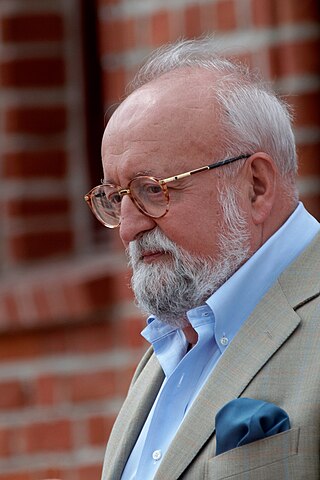
Polish Requiem, also A Polish Requiem, is a large-scale requiem mass for soloists, mixed choir and orchestra by the Polish composer Krzysztof Penderecki. The Lacrimosa, dedicated to the trade union leader Lech Wałęsa, was written for the unveiling of a statue at the Gdańsk Shipyard to commemorate those killed in the Polish anti-government riots in 1970. He expanded the work into a requiem, writing other parts to honour different patriotic events over the next four years.

Felicia Montealegre Bernstein was an American actress born in Costa Rica.

Leonard Bernstein's Symphony No. 1 Jeremiah was composed in 1942. Jeremiah is a programmatic work, following the Biblical story of the prophet Jeremiah. The third movement uses texts from the Book of Lamentations in the Hebrew Bible, sung by a mezzo-soprano. The work won the New York Music Critics' Circle Award for the best American work of 1944.

Le Martyre de saint Sébastien is a five-act musical mystery play on the subject of Saint Sebastian, with a text written in 1911 by the Italian author Gabriele D'Annunzio and incidental music by the French composer Claude Debussy (L.124).
Songs of Sunset is a work by Frederick Delius, written in 1906–07, and scored for mezzo-soprano and baritone soli, SATB chorus and large orchestra. The words are by Ernest Dowson.
